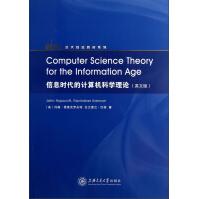Computer Science Theory for the Information Age covers the computer science theory likely to be useful in the next 40 years, including high- dimensional space, random graphs, singular value decomposition. random walks, Markov chains, learning algorithms, VC-dimension, algorithms for massive date problems, clustering. The book also covers graphical models and belief propagation, ranking and voting, sparse vectors, and compressed sensing. The book is intended for either an undergraduate or a graduate theory course in computer science. Prof. John Hopcroft is a world-renowned scientist and an expert on education in computer science. He was awarded the A. M. Turing Award in 1986 for his contributions in theoretical computing and data structure design. Dr. Ravindran Kannan is a principal researcher with Microsoft Research Labs located in India.

